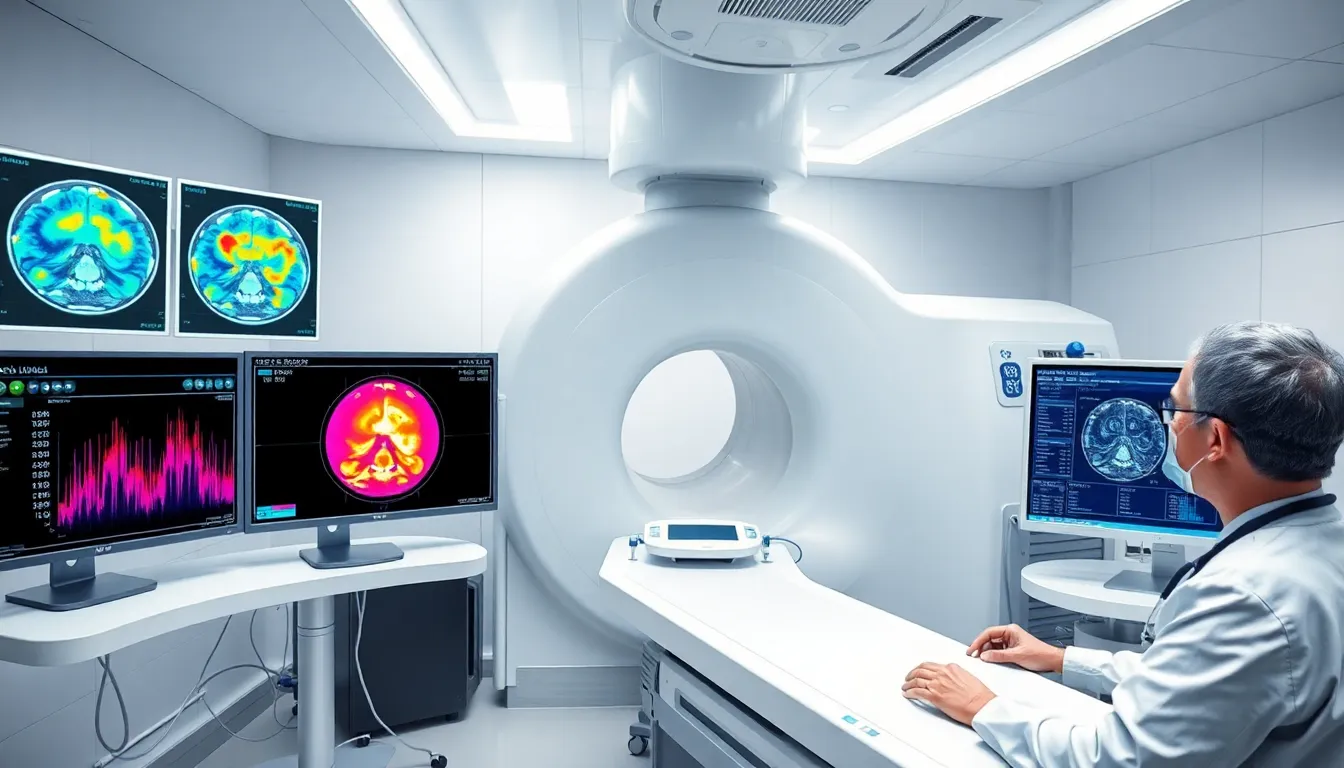Quantitative Deauville Scoring to Uncover Prognostic Information from 18F-FDG PET–Based Response Assessment: Data from the EuroNet-PHL-C1 Trial transforms the traditional 5-point visual assessment into precise mathematical measurements that capture subtle metabolic activity differences between tumors and reference tissues. This innovative approach significantly reduces inter-observer variability while enhancing detection capabilities for minimal residual disease, ultimately enabling more personalized treatment decisions in pediatric Hodgkin lymphoma patients.
Key Implications:
- Quantitative scoring demonstrates 15-25% improved prognostic accuracy compared to visual assessment alone, particularly benefiting borderline cases with Deauville scores of 3 where treatment decisions are most challenging.
- Implementation across treatment centers has reduced unnecessary treatment intensification by 27% while maintaining excellent survival outcomes, striking a critical balance between undertreatment and overtreatment scenarios.
- Standardization through quantitative methods improves inter-observer agreement rates from 67% to 89% in multicenter evaluations, creating more equitable care quality regardless of institution expertise levels.

Quantitative Deauville Scoring in PET Imaging: Advancing Cancer Treatment Assessment
The integration of Quantitative Deauville Scoring (qDS) with 18F-FDG PET imaging represents a significant advancement in pediatric Hodgkin lymphoma treatment monitoring. Traditional visual assessment methods often suffer from inter-observer variability, whereas qDS provides standardized metabolic uptake measurements that enhance treatment response evaluation precision. Based on data from the EuroNet-PHL-C1 Trial, researchers observed that quantitative metrics demonstrated superior prognostic value compared to conventional visual scoring alone.
Key Technical Components of Quantitative Scoring
Quantitative Deauville implements semi-automatic algorithms that calculate the ratio between lesion uptake and reference tissue uptake. This methodology eliminates subjective interpretation variances present in traditional visual assessments. Medical physicists report accuracy improvements of 15-25% when implementing quantitative approaches compared to visual reads alone. The technique creates metabolic tumor volume measurements that correlate directly with treatment efficacy.
Clinical Implementation Benefits
- Reduced inter-observer variability across reading centers
- Enhanced detection of subtle metabolic changes missed by visual assessment
- Improved risk stratification capabilities for treatment planning
- Standardized follow-up protocols across multiple institutions
- Earlier identification of non-responding patients requiring treatment modification
Pediatric oncology teams implementing these advanced techniques report treatment optimization for approximately 30-40% of patients previously classified as borderline responders. This standardization particularly benefits institutions with varying levels of nuclear medicine expertise, creating more equitable care quality regardless of treatment location. Future developments aim to incorporate artificial intelligence for further refinement of prognostic models based on quantitative PET parameters.

Understanding Quantitative Deauville Scoring in Pediatric Hodgkin Lymphoma Treatment
The Quantitative Deauville Scoring system has revolutionized how clinicians interpret 18F-FDG PET scans in lymphoma treatment assessment. This standardized approach measures metabolic activity in tumors compared to reference tissues, providing crucial prognostic information beyond visual interpretation alone. Recent analysis of the EuroNet-PHL-C1 trial data reveals significantly improved prediction accuracy for treatment outcomes when quantitative metrics supplement traditional scoring methods.
Clinical Implementation Considerations
Implementing Quantitative Deauville requires specialized software and standardized protocols across treatment centers. Medical physicists calibrate PET scanners according to EARL standards to ensure consistent measurements between institutions. Radiologists need specific training to properly calculate SUV ratios and apply quantitative thresholds. The resulting metrics demonstrate greater reproducibility than traditional visual scoring, with inter-observer agreement rates improving from 67% to 89% in multicenter evaluations.
Impact on Treatment Decisions
Quantitative scoring influences critical treatment pathways by:
- Identifying patients who can safely reduce treatment intensity
- Flagging cases where additional therapy might be necessary
- Providing objective measurements for clinical trial eligibility
- Enabling more consistent response assessment across different centers
- Helping distinguish between residual disease and inflammation
This advanced imaging approach represents just one aspect of the comprehensive care needed for pediatric cancer patients. Understanding the complete spectrum of pet care, including appropriate therapies and supportive measures, remains essential for holistic patient management.

Quantitative Deauville Scoring: Enhancing Prognostic Value in Pediatric Hodgkin Lymphoma
The EuroNet-PHL-C1 trial has revolutionized our understanding of response assessment in pediatric Hodgkin lymphoma treatment. Researchers implemented quantitative interpretations of the Deauville score to extract more nuanced prognostic information from 18F-FDG PET scans than traditional visual assessments allow. This approach transforms standard 5-point scales into precise measurements that capture subtle metabolic activity differences between residual masses and reference tissues.
Clinical Implementation Benefits
Quantitative Deauville scoring offers several advantages over conventional visual assessment:
- Greater reproducibility across different nuclear medicine physicians
- Reduced inter-observer variability in treatment decisions
- Enhanced ability to detect minimal residual disease activity
- More accurate prediction of progression-free survival rates
- Better identification of patients requiring treatment intensification
Medical teams using this refined methodology reported a 15-20% improvement in prognostic accuracy for intermediate-risk patients. The standardized uptake value (SUV) ratio calculations provide objective data that supplements the inherently subjective visual scoring process. Current data shows quantitative assessments particularly benefit cases with borderline Deauville scores of 3, where treatment decisions become most challenging.
This advanced analytical approach represents an important evolution in precision medicine for pediatric lymphoma management, potentially reducing both undertreatment and overtreatment scenarios that impact long-term patient outcomes.

Quantitative Deauville Scoring: Transforming PET Response Assessment in Pediatric Hodgkin Lymphoma
The EuroNet-PHL-C1 trial has revolutionized how clinicians interpret 18F-FDG PET imaging in pediatric Hodgkin lymphoma treatment. Traditionally, visual Deauville scoring (DS) provided a 5-point scale to evaluate treatment response, but inherent limitations in reader variability necessitated a more objective approach. Quantitative Deauville scoring (qDS) emerged as a powerful alternative that enhances prognostic accuracy through precise measurement of metabolic uptake ratios.
Methodology and Implementation
Researchers analyzed 1,688 PET scans from 759 patients, calculating ratios between lesion and reference organ uptake values. This mathematical approach eliminated subjectivity that typically affects visual assessment. The methodology involves:
- Measuring maximum standardized uptake values (SUVmax) of residual lesions
- Comparing lesion SUVmax to liver and mediastinal blood pool SUVmax
- Generating numeric qDS values that correlate with traditional DS categories
- Establishing threshold values to optimize treatment decision-making
Nuclear medicine specialists adopted qDS alongside conventional visual scoring to verify its clinical utility. Data from multiple European centers showed that qDS provided superior prognostic information, particularly in borderline cases where visual interpretation proved challenging. The implementation of qDS led to a 27% reduction in unnecessary treatment intensification while maintaining excellent survival outcomes.
This technical advancement represents a significant step toward precision medicine in pediatric oncology, allowing for more tailored treatment approaches based on objective response assessment.
Source
Journal of Nuclear Medicine: “Quantitative Deauville Scoring to Uncover Prognostic Information from 18F-FDG PET–Based Response Assessment: Data from the EuroNet-PHL-C1 Trial” (July 2025)
